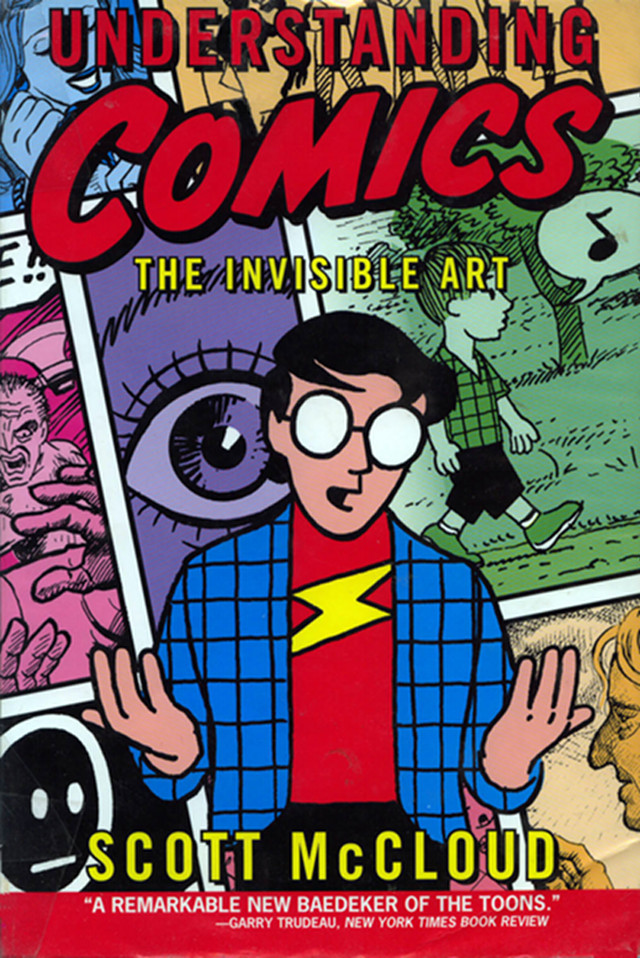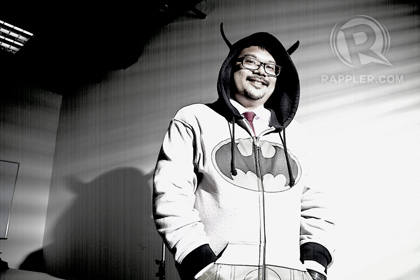SUMMARY
This is AI generated summarization, which may have errors. For context, always refer to the full article.

MANILA, Philippines – The new school year has begun, and Prof. Javier has mapped out a new way to teach comic book writing.
This first semester, I am teaching a course on comic book writing at the University of the Philippines Diliman. I took over from Prof. Emil Flores, who originally designed the course and is a pioneer in bringing comics to the academic setting in the country.
READ: Pinoy Komiks goes to the UK
Prof. Flores, who was my teacher in a number of other subjects like American Literature, took a traditional approach to the course, handling it like a workshop. The workshop is the standard Creative Writing class format, where the professor provides writing models, then has students prepare drafts. The drafts are subjected to workshops, where the author must remain silent while the rest of the class discuss his draft, giving feedback and suggestions on how to improve the draft. The workshop can sometimes be a brutal process, as harsh criticism can arise and egos are hurt or destroyed because people cannot handle the criticism.
While I will definitely be incorporating the workshop into my class, I want to try something new and different. I believe that while we are still teaching in traditional classroom settings, we have to find new ways to teach, new ways to enhance the learning process.
One of these ways is to run classes as if students were working in real world situations, and that’s what I plan to do this semester.
A comic book company
My class isn’t just a bunch of students. My class will be the writing staff of a comic book company. I will serve not only as teacher or instructor, but also as editor-in-chief of this comic book company. That’s the plan, anyway.
By the end of the semester, there will be a line of first issues released by the class, which can be sold separately or as a collected volume (and my grand plan is to have this collection available for purchase at November Komikon).
Comics, costumes, crowds: Summer Komikon
Of course there’s going to be a laying of groundwork, establishing fundamentals. Writing for comics is just like any other writing, but it’s also different from every other form. That’s what I tell myself whenever I write a different genre or art form. Whether it’s poetry, fiction, non-fiction, TV, film, comics, advertisements, whatever, there are fundamentals of writing that hold for any form.
Writing is sitting down and putting ideas on the page. At the same time, a keen awareness of the form that one is writing in is essential, so that you can maximize the form. What can I do in prose fiction that I can’t do in TV? How can this scene be written better, in a more filmic way?
Understanding the comics form
In the study of comic books, it is essential to understand the form of comics. Thinking about comics not as mere words and pictures, but as its own art form with conventions and different ways of working, is something that must be imparted early on in the class (assuming the students aren’t thinking it already).
I turn then to a couple of books by Scott McCloud: “Understanding Comics” and “Making Comics.”
“Understanding Comics” is just plain required reading for anyone who likes comics, because it provides us with a framework through which to read and think about comics. It shows us how comics operate and what they do that make them a unique art form. The companion book uses McCloud’s technique of using comics to educate us about comics, but this time with a focus on making them.
From there, I throw two more books about comics at students. These will be Stan Lee’s “How to Write Comics” and Alan Moore’s “Writing for Comics.”
Stan Lee’s book is filled with insights about comics writing in general, and gives a lot of content about the practical aspects of writing. It establishes a base of knowledge that the aspiring writer will need. Now Moore’s book is, as the author himself is, more cerebral and filled with insights and new ways to think about comics. I like the contrast between these two creators’ approaches: Stan Lee’s Marvel style is very loose, while Moore’s style is extremely detailed and meticulous.
Comics creators in the flesh
After establishing a base of knowledge, I’ll dump a bunch of comics on the students which will serve as models for good writing. Along with the reading, I plan to invite comics creators (I am roping in a coalition of the willing, mostly friends) to visit the class and talk to students about their process and how they create their comics. Students will be asked to read the works of those creators, and then prepare questions.
No better way than to hear it from the pros and then do it yourself, right? A series of talks with creators will hopefully allow the students to have a better idea of this project that they are undertaking. I do hope too that it will inspire them as they make their own books. Reading local comics will also help students get a sense of the milieu in which they will be producing their work.
I will then ask students for pitches. It’ll be treated like a big editorial meeting where we plan out our line of comics, envisioning 3 things:
1. Does it sound like an interesting comic book? Would you want to read it?
2. How does this comic book fit into the current comics milieu, both locally and internationally? Is it filling a niche or creating a new space?
3. How does it fit in with the other books in our line? Are they part of a shared universe? Is it in a genre that the others aren’t, which would allow it to appeal to a different audience?
We’ll pick these pitches apart. Only when we’re all satisfied with it will we proceed to the writing phase. It’s in the writing phase that there will be a separation in the class.
Time to write!
The class will divide between those who are writing and drawing, and those who are collaborating with artists. Those writing and drawing will have to make timetables and sketch out pages. Those working with artists will have to produce synopses and scripts.
We’ll workshop these. Then we’ll let the comics be made.
The products will be subjected to another round of workshops so that we can see where the works can be further improved. We’ll keep working at these until we are happy with our comics.
Once they are ready for printing, we’ll have a class about reproducing comics and distributing them. And then we’ll take our books to press.
I am excited to try out this experiment. I hope the students like it. I hope that we have some good output. Most of all, I hope that this becomes a rich learning experience for us all. – Rappler.com
Carljoe Javier is at the faculty of English and Comparative Literature at UP. He is also an author, and among his books are The Kobayashi Maru of Love, the new edition of which is available from Visprint Inc. His upcoming Writing 30 will be available as an ebook at amazon, ibookstore, b&n and flipreads.com
Add a comment
How does this make you feel?

There are no comments yet. Add your comment to start the conversation.